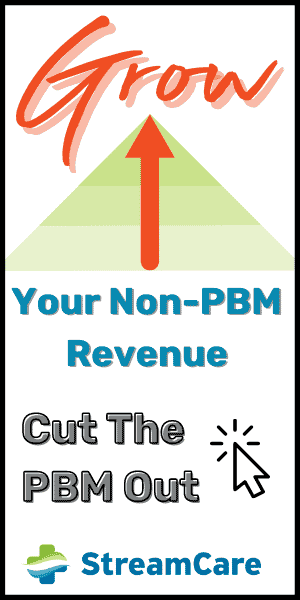Ensure your pharmacy valuation is as strong as it should be by understanding add-backs.
I have been looking for another pharmacy to buy and thus have been doing a ton of pharmacy valuations along the way. It has been a great reminder that maintaining accurate financial records is a must. It is also important to understand how your financials will change depending on the situation. Financials for taxes are a bit different than financials when calculating a pharmacy valuation.
Now, technically, the financials are the same. I am in no way saying to cook the books. However, for pharmacy valuations, the buyer wants to understand the true cash flow and operational profitability of the pharmacy. To do that, you have to factor in add-backs.
What Are Add-backs?
Add-backs are adjustments to your financial statements that add back certain expenses, providing a more accurate representation of your pharmacy’s earning potential. These expenses are typically one-time or non-essential, and removing them from the equation helps reveal your business’s true profitability. By accurately accounting for add-backs, you can present a clearer financial picture to potential buyers or investors, thereby increasing your pharmacy’s value and cash flow.
The Importance of Add-backs to a Pharmacy Valuation
1. Accurate Valuation: Add-backs will add more profit to your business, thereby increasing the calculated pharmacy valuation.
2. Better Insight: Properly accounting for add-backs will help any potential buyer better understand the true operational cash flow of your pharmacy.
3. Informed Decision Making: Even if you are not selling, accounting for add-backs will give you a clearer picture of your pharmacy’s health so you can make better financial decisions about its future.
Common Add-backs in Independent Pharmacies
To implement add-backs effectively, it’s crucial to identify the common expenses that can be adjusted. There are typically 3 categories of add-backs: non-recurring expenses, owner’s benefits, and above-market compensation. Here are some examples that are common in independent pharmacies and will impact your pharmacy’s valuation.
– Bloated Salaries or Excessive Compensation: Sometimes, owners or relatives may receive salaries or compensation that exceed industry standards. Adjusting these expenses can provide a more accurate reflection of the business’s profitability.
– Above-Market Rent or Lease Payments: If your pharmacy is paying rent or lease payments above the market rate, this can be adjusted to reflect a more realistic financial scenario.
– Owner Expenses: Owner expenses charged to the business, such as personal travel or entertainment, should be excluded to present a true financial picture.
– Non-Recurring Expenses: One-time legal fees, restructuring costs, or other non-recurring expenses should be adjusted to avoid skewing the financial data.
– Discretionary Expenses: Expenses that are not essential for ongoing operations, such as excessive travel and entertainment costs, should be removed from the financial statements.
– Health Insurance and Personal Benefits: Health insurance or other personal benefits paid by the business can be adjusted to reflect the true operating costs.
– Retirement Contributions and Perks: Contributions to retirement plans or other perks that are not standard industry practice should be considered for adjustment.
– Depreciation and Amortization: Depreciation and amortization expenses may not always reflect the true economic cost and can be adjusted accordingly.
Practical Steps to Implement Add-backs
Now that we understand the importance and common types of add-backs let’s discuss practical steps to implement them in your pharmacy. Your financial team should lead the way in this, and I believe it is critical that you, the owner, understand the how and why, too.
1. Review Financial Statements: Regularly review your financial statements to identify potential add-backs. Look for one-time, non-essential, or above-industry-standard expenses.
2. Consult with Financial Experts: Work with accountants or financial advisors who specialize in the pharmacy industry. Their expertise can help you accurately identify and adjust for addbacks.
3. Maintain Detailed Records: Keep detailed records of all expenses. This documentation is crucial for accurately identifying and justifying addbacks.
4. Benchmark Against Industry Standards: Compare your expenses with industry standards. This benchmarking can help you identify areas where adjustments may be necessary.
5. Communicate with Stakeholders: Clearly communicate the rationale behind add-backs to potential buyers or investors. Transparency builds trust and enhances the credibility of your financial statements.
Real-World Examples of Add-backs in Action
Let’s consider a few real-world scenarios to illustrate how add-backs can impact the valuation of an independent pharmacy:
Scenario 1: Bloated Salaries
Imagine you own a pharmacy where you and a few family members draw salaries that are above the industry standard. By adjusting these salaries to reflect what would be paid to non-family employees, you can present a more accurate picture of the pharmacy’s operating expenses and profitability. This adjustment could significantly increase the pharmacy’s valuation, as it shows a potential buyer that they can maintain profitability with lower salary expenses.
Scenario 2: Excessive Travel
Suppose your pharmacy’s financial statements include significant travel expenses to attend pharmacy conferences. By identifying and adding back these expenses, you can demonstrate that the pharmacy’s core operations are more profitable than the financial statements initially suggest. These add-backs can be particularly appealing to buyers who are looking for a lean, efficiently run business.
Scenario 3: Non-Recurring Legal Fees
Consider a year in which your pharmacy incurred substantial legal fees due to a one-time lawsuit. These expenses are non-recurring and do not reflect the pharmacy’s ongoing operational costs. By adding back these legal fees, you can show a potential buyer that these costs are not a regular part of doing business, thereby presenting a more attractive and sustainable financial outlook.
Challenges and Considerations
While add-backs are a powerful tool, they must be used judiciously. Here are some challenges and considerations to keep in mind:
1. Justification of Add-backs: Each add-back must be well-documented and justifiable. Potential buyers or investors will scrutinize these adjustments, and unjustified add-backs can damage your credibility.
2. Consistency: Ensure consistency in applying add-backs. Regularly review and adjust your financial statements to reflect accurate profitability. Inconsistent application can lead to confusion and mistrust.
3. Transparency: Communicate clearly with stakeholders about the rationale behind each add-back. This helps build trust and ensures that all parties understand your pharmacy’s true financial health.
As independent pharmacy owners, it’s essential to go beyond the surface numbers and understand our businesses’ true financial health. Add-backs play a crucial role in this process by providing a more accurate representation of your pharmacy’s profitability and growth potential. If you are looking to boost your pharmacy valuation—a critical part of maximizing value—please don’t hesitate to reach out to us or consider joining Pharmacy Badass University to maximize your pharmacy’s performance.

















